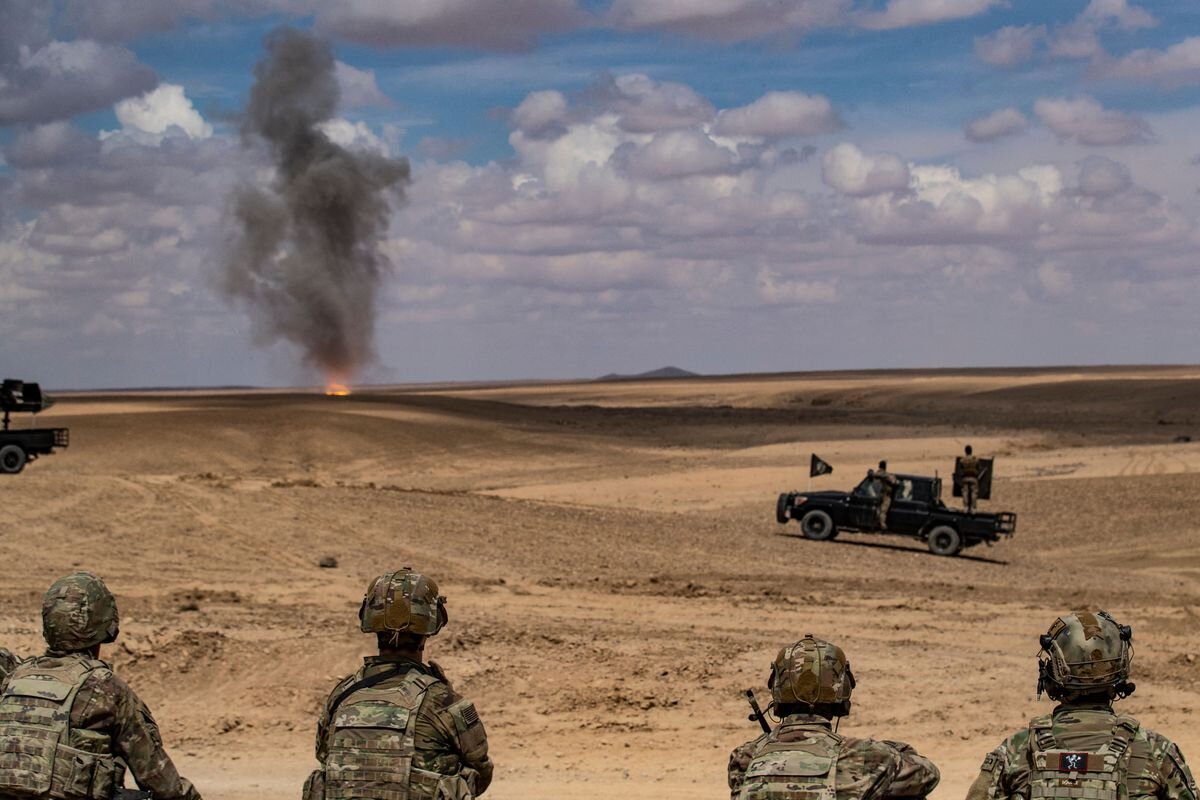U.S Strikes on Resistance Bases in Iraq and Syria: A Message to Iran?

TEHRAN- The United States Central Command (CENTCOM) announced on Saturday, February 2, that it targeted positions in Syria and Iraq in response to the killing of three soldiers in an attack on a Jordanian base 5 days before. CENTCOM claimed to have targeted 85 positions in these incursions.
In a statement, U.S. President Joe Biden said, “At my direction, U.S. military forces struck targets at facilities in Iraq and Syria,” adding that the attacks “will continue at times and places of our choosing.” Biden’s statement said the U.S. “does not seek conflict in the Middle East or anywhere else in the world.”
In its initial response, the Iraqi Resistance targeted the Ain al-Asad base and subsequently the Harir base in Erbil. The Iraqi government summoned the U.S. charge d’affairs in Baghdad in protest, and the Syrian Ministry of Defense condemned the U.S. attacks on the eastern regions, viewing it as another sign of the U.S.’s collaboration with the terrorist group ISIS and an attempt to revive them.
The spokesperson for Iran's Ministry of Foreign Affairs also strongly condemned the U.S. military attacks on Iraq and Syria, associating them with serving the goals of the Zionist regime. Nasser Kanaani emphasized that these attacks further involve the U.S. in the region and expose the crimes of the Zionist regime in Gaza.
How militarily significant were the U.S. strikes despite prior warnings?
On the evening of February 2, CENTCOM announced an airstrike on 85 targets at 12 points in Al-Mayadin, Al-Bukamal, and the Al-Qa'im crossing. The targeted corridor logistically plays a significant role in the movement of forces between Iraq and Syria and vice versa, and serves as a crucial deployment site for resistance bases.
Despite the U.S.’s attempt to promote the scale of the operation, according to officials in the Iraqi Islamic Resistance, most of the targeted sites were “non-operational”. This, along with the delay of five days in responding to the axis of resistance, has faced severe criticism from Biden's opponents in the U.S., particularly among Republicans. They alleged that the 5-day delay provided an opportunity for Iran to move its forces out of the range of U.S. retaliation.
What Does the Previous Warning from the U.S. Signify?
Considering the prior warning from the United States regarding attacks on resistance headquarters in Syria and Iraq, and the repeated emphasis by both sides that they are not seeking to escalate tensions in the region, the following hypothesis arises: Is there a temporary agreement between the Resistance Axis and the U.S.? The answer to this question will become apparent over time. However, with a recent statement by the Iraqi Hezbollah saying that they are no longer attacking U.S. bases, focusing instead on countering the Zionist regime, it seems that both sides are working to manage and control the crisis in the region. It is possible that in the coming days, we witness efforts to further handle the tensions.
In this scenario, a less optimistic assumption also comes to mind. As mentioned before, the recent U.S. airstrikes specifically targeted a critical logistics corridor facilitating the movement of forces between Iraq and Syria and vice versa. On the other hand, for the U.S., staying silent after the killing of its military personnel risks diminishing its military deterrence, raising concerns about the seriousness of U.S. threats over time. Also, with the upcoming U.S. presidential elections, pressures on the Biden administration to retaliate for attacks on its military forces at the Jordanian border have intensified. Biden could not escape these pressures, and his electoral rivals also wanted to use this situation to exert pressure on his administration.
Moreover, instead of using drone and missile attacks from its bases in the region, which would be a more logical and less challenging choice, the U.S. used B1 bombers that flew directly from the United States, equipped with the capability to refuel in the sky, potentially serving as a direct message to opposing forces in West Asia.
Separate and individual confrontations with members of the Resistance Axis could be a new U.S. policy. Iranian officials have time and again stated that Iran does not have proxy forces in the region, and resistance groups in regional countries act independently. The statement from the Iraqi Hezbollah also emphasizes their actions are based on independent decisions. The independent actions of Yemen's Ansarullah in the Red Sea further strengthen this hypothesis. That raises concerns that the U.S. may be seeking separate confrontations with Iran with minimal engagement
Although the White House and the Pentagon have repeatedly said in recent days that they will refrain from "sending messages" before their attacks, experts believe that they have done so to prevent a widespread, all-out war with Iran. To avoid the risk of a broader war in the region, the U.S. must intensify its efforts to address the root cause of these tensions, which is the ongoing Gaza conflict. Washington has to choose between two options: unconditional support for Israel, objecting to a permanent ceasefire, sending more weapons to this regime, and fueling the flames of war in Gaza; or preventing the escalation of conflicts in West Asia, disrupting global shipping routes, threatening commercial assets by provoking Yemen's Ansarullah, and prompting consecutive attacks on its bases in regional countries.
